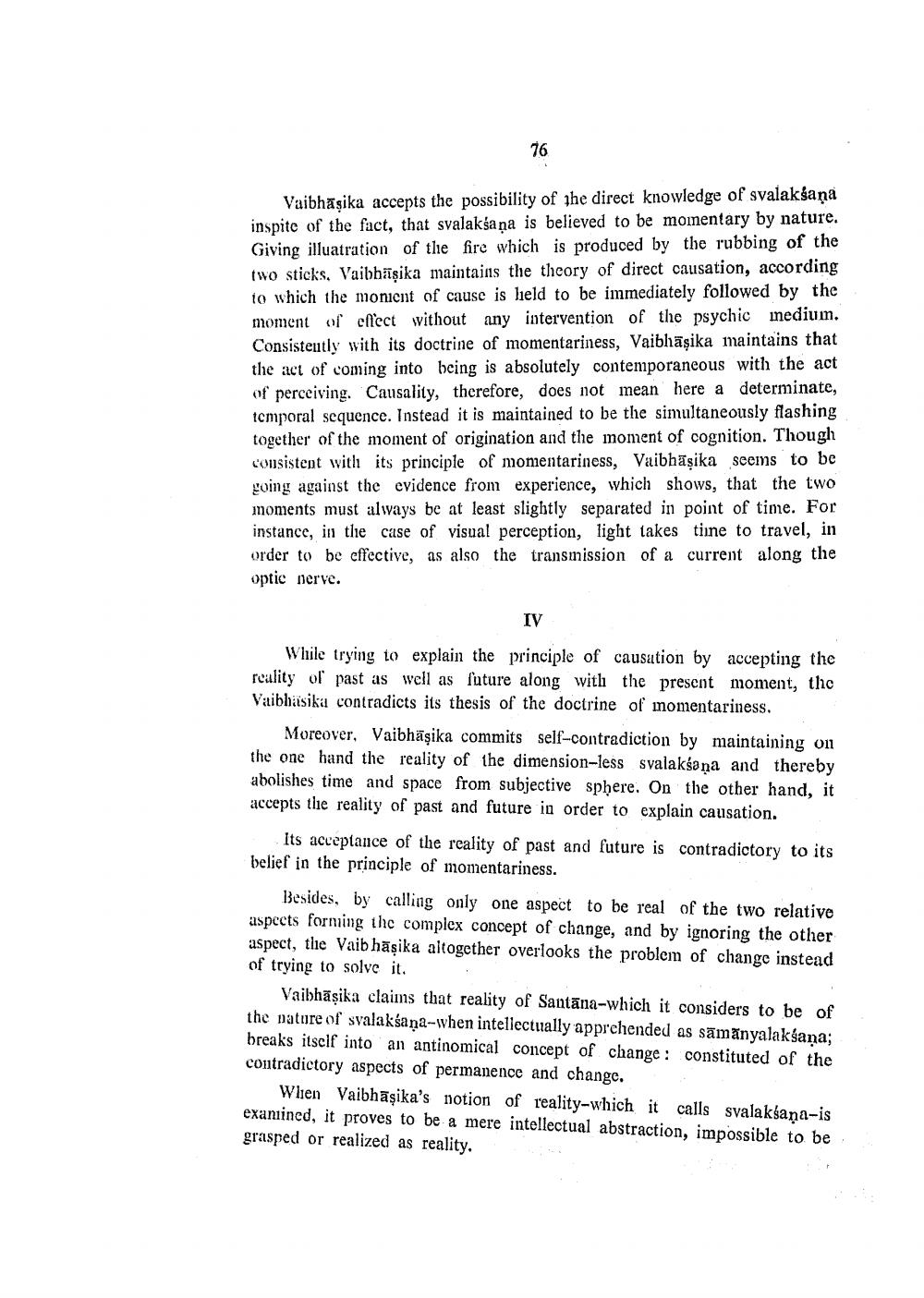________________
Vaibhāșika accepts the possibility of the direct knowledge of svalaksaņa inspite of the fact, that svalaksaņa is believed to be momentary by nature. Giving illuatration of the fire which is produced by the rubbing of the two sticks. Vaibhāşika maintains the theory of direct causation, according io which the monient of cause is lield to be immediately followed by the moment of cfl'ect without any intervention of the psychic inedium. Consistently with its doctrine of momentariness, Vaibhāșika maintains that the act of coming into being is absolutely contemporaneous with the act of perceiving. Causality, therefore, does not mean here a determinate, temporal sequence. Instead it is maintained to be the simultaneously flashing together of the moment of origination and the moment of cognition. Though cousistent with its principle of monentariness, Vaibhāşika seems to be going against the evidence from experience, which shows, that the two moments must always be at least slightly separated in point of time. For instance, in the case of visual perception, light takes tiine to travel, in order to be cffective, as also the transmission of a current along the optic nerve.
IVA
While trying to explain the principle of causation by accepting the reality of past as well as future along with the present moment, the Vaibhäsika contradicts its thesis of the doctrine of momentariness.
Moreover, Vaibhāşika commits self-contradiction by maintaining on the one hand the reality of the dimension-less svalaksaņa and thereby abolishes time and space from subjective sphere. On the other hand, it accepts the reality of past and future in order to explain causation.
We 11.
.
Its acceptance of the reality of past and future is contradictory to its belief in the principle of momentariness.
Besides, by calling only one aspect to be real of the two relative aspects forming the complex concept of change, and by ignoring the other aspect, the Vaib hāṣika altogether overlooks the problem of change instead of trying to solve it.
Vaibhāșika claims that reality of Santāna-which it considers to be of the nature of svalaksana-when intellectually apprehended as sämānyalaksana; breaks itself into an antinomical concept of change: constituted of the contradictory aspects of permanence and change.
Wlien Vaibhāşika’s notion of reality-which it calls svalaksaņa-is exanıined, it proves to be a mere intellectual abstraction, impossible to be grasped or realized as reality.




